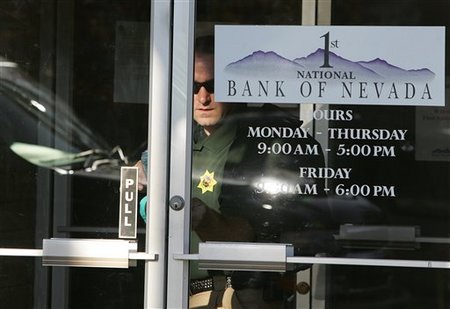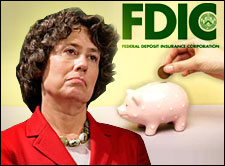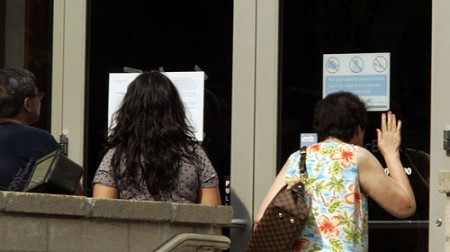US banks set aside a record $37.1bn to cover losses on real estate loans and other credits during the first quarter in a sign of the growing economic pain being caused by the global credit crisis, regulators said on Thursday.
Sheila Bair, chairwoman of the Federal Deposit Insurance Corporation, said it was likely loan-loss provisions and bank failures would rise in coming quarters as the fallout from market turmoil hits the real economy.
“While we may be past the worst of the turmoil in financial markets, we’re still in the early stages of the traditional credit crisis you typically see during an economic downturn,” she said, adding: “What we really need to focus on is the uncertainty surrounding the economy . . . and again it is all about housing.”
Ms Bair spoke as the FDIC released its quarterly banking profile, which showed loan-loss provisions in the first quarter were more than four times higher than last year’s level. That was the main reason bank earnings fell 46 per cent to $19.3bn from the first quarter in 2007 for the commercial banks and savings institutions where the FDIC insures customer deposits.
Following restatements by banks, the FDIC revised the industry’s net income for the fourth quarter of last year from $5.8bn to $646m – the lowest since the end of 1990.
Meanwhile, the FDIC said the number of “problem” banks rose in the first quarter from 76 to 90, with combined assets of $26.3bn. Three US banks have failed this year, compared with three for the whole of last year and none in 2005 and 2006.
Ms Bair said she expected more bank failures but emphasised that the number of problem institutions remained well below the record levels of the savings and loan crisis of the 1980s and 1990s – when one in 10 banks were in that category.
However, she said one worrying trend was the declining “coverage ratio”, which compares bank reserves with the level of loans that are 90 days past due. This ratio fell for the eighth consecutive quarter, to 89 cents in reserves for every $1 of noncurrent loans, the lowest level since the first quarter of 1993.
“This is the kind of thing that gives regulators heartburn,” said Ms Bair. “We also want them to beef up their capital cushions beyond regulatory minimums given uncertainty about the housing markets and the economy . . . It’s only prudent to be building up capital at a time like this.”
In a sign that some US banks may have underestimated the cost of the housing slump, KeyCorp this week doubled its forecast for loan losses – its second revision in as many months – sending its share price tumbling by more than 10 per cent. During the property boom, KeyCorp expanded in fast-growing regions such as southern California and Florida, where problem loans are now growing.
By Joanna Chung and Saskia Scholtes in New York
Published: May 29 2008 20:43 | Last updated: May 29 2008 20:43
Source: Financial Times

![[Loan Troubles]](http://s.wsj.net/public/resources/images/P1-AM282_SUBFED_20080720190427.gif)


